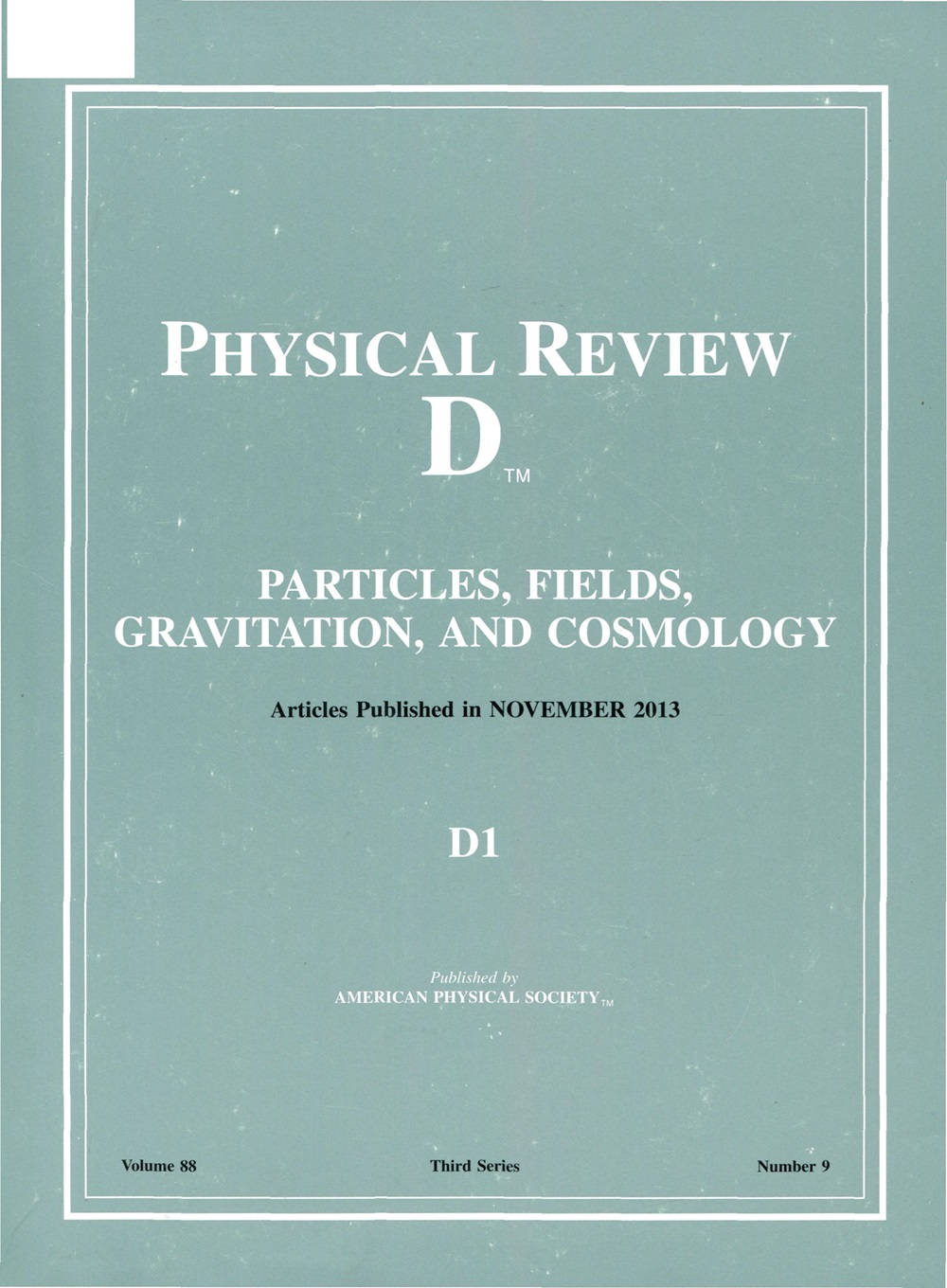从散射振幅得到经典世界线
IF 5
2区 物理与天体物理
Q1 Physics and Astronomy
引用次数: 0
摘要
受黑洞双星引力波研究的启发,我们通过Kosower-Maybee-O 'Connell形式主义,对量子场论中由散射振幅计算的观测值的经典极限进行了系统的图解研究。我们利用Schwinger参数化方法,将切和未切传播子在组合之前改写成类世界线表示,从而在一个环之外的被积层上的h→0极限处的散度明显消去。所得到的有限经典被积函数与后闵可夫斯基有效场论和世界线量子场论等世界线形式中的对应项具有相同的形式,并且在许多例子中实际上与后者完全一致,明确地显示了散射振幅与世界线形式之间的等价性。由迟滞传播子公式所表达的经典因果关系流,作为一种突现特征出现。给出了电动力学中的脉冲可观测量和两个环上的标量模型的例子,以及高阶图和全阶图的某些子类。2025年由美国物理学会出版本文章由计算机程序翻译,如有差异,请以英文原文为准。
Classical worldlines from scattering amplitudes
We present a systematic diagrammatic investigation of the classical limit of observables computed from scattering amplitudes in quantum field theory through the Kosower-Maybee-O’Connell formalism, motivated by the study of gravitational waves from black hole binaries. We achieve the manifest cancellation of divergences in the ℏ→0 limit at the integrand level beyond one loop by employing the Schwinger parametrization to rewrite both cut and uncut propagators in a worldlinelike representation before they are combined. The resulting finite classical integrand takes the same form as the counterpart in the worldline formalisms such as post-Minkowskian effective field theory and worldline quantum field theory, and in fact exactly coincides with the latter in various examples, showing explicitly the equivalence between scattering amplitude and worldline formalisms. The classical causality flow, as expressed by the retarded propagator prescription, appears as an emergent feature. Examples are presented for impulse observables in electrodynamics and a scalar model at two loops, as well as certain subclasses of diagrams to higher orders and all orders. Published by the American Physical Society 2025
求助全文
通过发布文献求助,成功后即可免费获取论文全文。
去求助
来源期刊

Physical Review D
物理-天文与天体物理
CiteScore
9.20
自引率
36.00%
发文量
0
审稿时长
2 months
期刊介绍:
Physical Review D (PRD) is a leading journal in elementary particle physics, field theory, gravitation, and cosmology and is one of the top-cited journals in high-energy physics.
PRD covers experimental and theoretical results in all aspects of particle physics, field theory, gravitation and cosmology, including:
Particle physics experiments,
Electroweak interactions,
Strong interactions,
Lattice field theories, lattice QCD,
Beyond the standard model physics,
Phenomenological aspects of field theory, general methods,
Gravity, cosmology, cosmic rays,
Astrophysics and astroparticle physics,
General relativity,
Formal aspects of field theory, field theory in curved space,
String theory, quantum gravity, gauge/gravity duality.
 求助内容:
求助内容: 应助结果提醒方式:
应助结果提醒方式:


